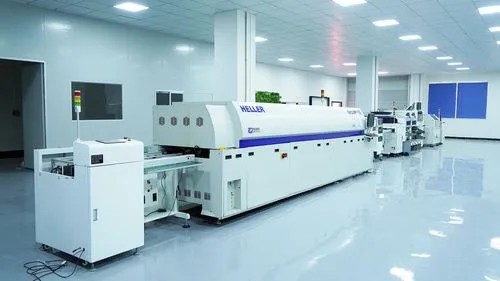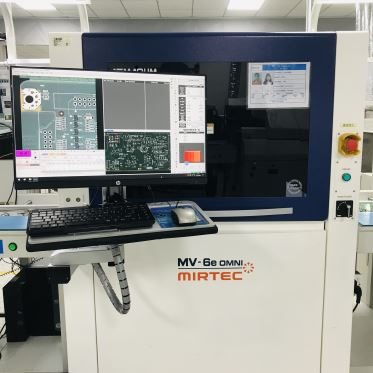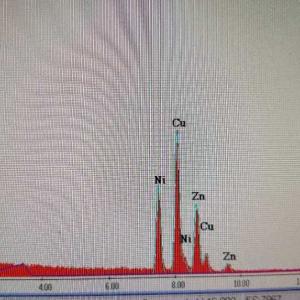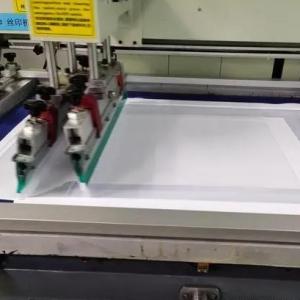SMT patch process and precautions
SMT should be the most automated part of the modern electronic assembly industry, so what should we pay attention to? A whole production line only needs 5-7 operators to maintain the operation of a production line, and about every 30 ~60 seconds to produce a PCBA assembly board.1. Printing production serial number (Shop Floor tracking number)
The pre-work of the SMT production line must first print the production serial number on the bare PCB. This serial number is mainly used to track the production history. If the record is used properly, it can track which Date-code is printed on the board. It also allows us to track whether there are any abnormal conditions or bad repairs during the entire production process. Of course, these are all prerequisites. If you want to gain anything, you must pay.
There are currently about 4 options for printing the production serial number of circuit boards. At present, companies that are ahead of the curve will recommend the use of "laser engraving" technology, which has fewer side effects and is more beautiful.
In addition, some companies that can’t keep up with the pace may not print the serial number at the stage of empty plate, but wait until the sub-board is completed before making the serial number. The more advanced the serial number is imported in the production process, the more complete the production history can be traced.
2. Bare Board Loading
The first step in circuit board assembly is of course to load the bare board onto the SMT assembly line. At present, the most common technology is to stack the empty boards neatly, place them on the material rack, and then send them from the uppermost boards to the conveyor belt of the SMT production line one by one by the mechanism device similar to the paper delivery of the printer. However, This kind of operation sometimes causes surface scratches on some boards during the pushing process, so sometimes the empty boards are placed in the magazine, so that there will be no problems when the machine is stacked. The problem of scratching is just an extra action of putting it into the distribution rack.
These processes will be sent to the computer by sensors (Sensor) as eyes, and then judge when to push the board, and give instructions when to stop the board from moving forward.

3. Solder paste printing
The first operation of Printed Circuit Board (PCB)" entering the SMT production line is "solder paste (solder paste)". To be honest, this is a bit like a girl applying a mask on her face.
This step will print the solder paste through the stencil on the pads/pads of the parts to be soldered on the PCB. The position and volume of the solder paste will affect the quality of the subsequent soldering. These solder pastes will be used in the subsequent SMT. When the process flows through the high-temperature zone of the "reflow oven (Reflow Oven)", it melts and solders electronic components to the circuit board during the process of re-solidification.
There are two main reasons for using "solder paste" as the combination of electronic components and PCBs:
1) Paste and fix the electronic parts on the circuit board before the soldering is completed, so that it will not be shifted due to the movement or vibration of the PCB. That's why it's a paste.
2) Solder and fix the electronic parts on the PCB after high temperature reflow, so that they will not fall off during the end user's use, and achieve the purpose of electronic signal transmission.
In addition, some people will use film board/adhesive cardboard instead of solder paste when testing new products, which can increase the efficiency of SMT adjustment and reduce waste.
4. Solder paste inspection machine (solder paste inspector, SPI)
The quality of solder paste printing will directly affect the quality of subsequent parts welding, so now most of the leading EMS factories will install an additional optical instrument after solder paste printing to ensure stable quality. To check the quality of solder paste printing, this instrument is called "Solder Paste Inspector (SPI)". Its principle is similar to that of AOI (AutoOptical Inspection). Pick it out, wash off the solder paste on it and reprint the solder paste, or remove the excess solder paste by repairing.
The reason why this SPI is important is that if the solder paste is cured after reflowing, if there is a soldering problem in the part after the solder paste is cured, it must be reworked with a soldering iron, or it will be scrapped. If the solder paste printing problem can be found before the early curing And to improve or solve it, you can greatly reduce the production defect rate and reduce the cost of repair.
5. ChipPlacement, Pickand Places peedmachine
Electronic components on circuit boards are generally divided into active components (IC components) and passive components (Inductors, Capacitors, Resistors, etc.), and such SMD passive components (such as small resistors, capacitors, inductors) are also called "SmallChip" The volume is usually relatively small, and generally only two endpoints need to be soldered, so the relative position accuracy requirements are relatively low when placing such small parts on the circuit board, so a fast/high-speed patch is designed Machine (Chip Placement machine), this kind of placement machine generally has several nozzle heads, and the speed is very fast, as fast as a rotary machine gun, and can punch several parts in one second.
At this time, the advantages of the paste shape of the solder paste are revealed, because usually the nozzle head only moves up and down when printing parts, and the alignment of parts depends on the precise movement of the board. These parts that have been printed on the circuit board Electronic parts will be stuck by the solder paste that has just been printed on the circuit board (this is one of the reasons why the solder paste is made into a paste), so even if the speed of the part is very fast (the board moves at a normal speed) Fast), the parts on the board will not be thrown away and scattered, but large parts or parts with a certain weight are not suitable for processing with fast punching machines, which will slow down the speed of small parts that were originally punched fast. Second, I am afraid that the parts will be shifted from the original position due to the rapid movement of the board.
Depending on the number of small parts on the circuit board, an SMT production line will generally have 1 to 4 fast punching and placing machines.
6.Pick and Place general machine
This kind of general-purpose chip mounter is generally called "slow machine". It can be applied to almost all SMD parts, but because its appeal is not the speed, but the precision of the parts, so the slow machine is generally used to make some larger or heavier or more Pin-position electronic components, such as BGA integrated circuits, connectors, card readers, shielding frames/covers, etc., because these components require relatively accurate positions, the ability to align and adjust angles becomes It is very important. After picking up the part, the camera will be used to take a picture of the appearance of the part, and then the position and angle of the part will be adjusted before placing the part. Therefore, the overall speed is relatively much slower.
Due to the size of the electronic components here, not all of them are packaged in tape-on-reel, and some may be packaged in trays or tubes. But if you want the SMT machine to eat trays or tube-shaped packaging materials, you usually need to configure an additional machine.
Generally, the traditional pick and place machine uses the principle of suction to pick and place electronic parts, so there must be a clean plane on the top of these electronic parts for the suction nozzle of the pick and place machine to pick up the parts. , but some electronic parts just cannot have a flat surface for these machines. At this time, it is necessary to order special nozzles for these special-shaped parts, or add a layer of flat tape to the parts, or wear a flat cap. .
7. Handplace component or visual inspection (handplacecomponentorvisualinspection) or AOI in front of the furnace
When all the parts are printed on the circuit board before entering the high-temperature reflow furnace (reflow), there is usually an inspection point to pick out the defects of the printed parts such as offset or dropped parts, because after the high-temperature furnace If you find that there is a soldering problem again, you must use the soldering iron (iron), which will affect the quality of the product and will also incur additional costs; other parts that cannot be operated by the punching/mounting machine, such as larger electronic components Parts or DIP/THT traditional parts or some special reasons, the parts will also be placed manually here.
In addition, the SMT of some mobile phone boards will set up an additional "AOI in front of the furnace" before the reflow furnace to confirm the quality of the chip placement before reflow.
Another situation is that some boards will directly solder the "shielding-can" to the circuit board at the SMT stage. Once the shielding-can is placed on the circuit board, it cannot be checked by AOI or visual inspection. The quality of the chip and solder has deteriorated. It is recommended that in this case, one more "AOI in front of the furnace" must be installed before the "shielding cover" patch.
8. Reflow
The purpose of reflow is to melt the solder paste and form a non-metallic compound (IMC) between the part pin and the circuit board, that is, to solder the electronic part on the circuit board, and its temperature rise and fall curve (temperature profile) often affects the soldering quality of the entire circuit board. According to the characteristics of the solder, the general reflow furnace will set the preheating zone (pre-heat), soaking zone (soak), reflow zone (reflow), cooling zone (cool) to achieve the best soldering effect.
The melting point of SAC305 solder paste in the current lead-free process is about 217°C, which means that the temperature of the reflow furnace must be at least higher than this temperature to remelt the solder paste. In addition, the highest temperature in the reflow furnace is best not to If it exceeds 250°C, otherwise many parts will be deformed or melted because they cannot withstand such a high temperature.
Basically, after the circuit board passes through the reflow oven, the assembly of the entire circuit board is considered complete, except for hand-soldered parts, the rest is to check and test the circuit board for defects or malfunctions.
9. Optical inspection of solderability (AOI, AutoOpTIcalInspection) Option
Although "AOI after furnace" has almost become the standard configuration of SMT today, not every SMT production line will be equipped with "optical inspection machine (AOI)". One of the purposes of setting "AOI after furnace" is because some Circuit boards with too high density cannot be effectively followed by open and short circuit tests (ICT), so AOI is used instead. However, because AOI is an optical interpretation, it has inherent blind spots. For example, the solder under the parts cannot be inspected. There will be shadow effects near the high parts, which cannot be effectively inspected, and currently AOI can only check whether there are tombstones (tombstones), side standing, missing parts, displacement, polarity direction, solder bridges, empty soldering, etc. for visible parts. However, it is impossible to judge the quality of components such as false soldering, BGA solderability, resistance value, capacitance value, and inductance value. Some AOIs cannot even inspect the side solder of QFN or Castellated terminations.
Therefore, AOI cannot completely replace ICT and FVT so far.

So if you only use AOI to replace ICT, there will still be a great risk in terms of quality, but ICT is not 100%, it can only be said to complement each other's test coverage, and I hope to achieve 100% test coverage, so I have to do it myself A trade-off.
10. Unloading
When the board is assembled, it will be retracted into the magazine. These magazines have been designed to allow the SMT machine to automatically pick and place the board without affecting its quality, but you still have to pay attention to different boards during operation. The upper and lower spacing to avoid the problem of collision of electronic parts.
11. Finished product visual inspection (Visual Inspection)
Regardless of whether there is an AOI station, the general SMT line will still set up a visual inspection area for PCBA assembly boards, and the degree of confidence is still insufficient! The purpose is to check whether there are any defects after the circuit board assembly is completed. Others at the AOI station can reduce the number of visual inspection personnel, because it is still necessary to inspect some places that cannot be interpreted by the AOI, or to re-inspect the defects that have been rejected by the AOI. With the current technology, AOI still has a certain misjudgment rate.
Many factories will provide a key visual inspection template (inspection template) at this station, which is convenient for visual inspection personnel to inspect the solderability and polarity of some key parts.
12. Touchup or wave soldering parts
If some parts cannot be patched by SMT, you need to touch-up hand-soldered parts or use "wave soldering" or "selective soldering" to solder traditional through-hole parts. This step is usually It will be placed after the SMT finished product inspection, the purpose is to distinguish whether the defect comes from the SMT or the post-SMT process.
When "recovering" electronic parts, soldering iron (iron) and tin wire (solder wire) should be used. When soldering, the tip of the soldering iron maintained at a certain high temperature will touch the parts to be soldered and the pad until the temperature rises enough to melt the tin wire. Then add tin wire to melt, quickly remove the tip of the soldering iron to lower the soldering temperature, after the tin wire cools and solidifies, the parts will be soldered to the circuit board.
When welding parts by hand, there will be some smoke, which will contain a lot of heavy metals, so smoke exhaust equipment must be set up in the operating area, and try not to let the operator inhale these harmful fumes.
It needs to be reminded that the post-processing of some parts will be arranged in a later stage of the process due to the needs of the process.





